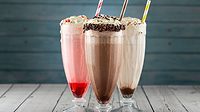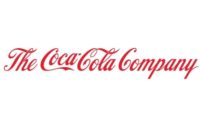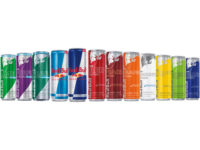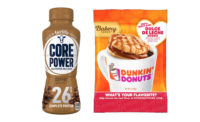Not many thought that when Queen lead rocker Freddie Mercury penned “Bohemian Rhapsody” in 1975 that it would be a success. The six-minute-long anthem, which combined diverse music genres such as opera, rock and pop with rousing lyrics, forever changed the face of music. While it’s been “no bed of roses, no pleasure cruise,” for the beverage industry in the wake of the COVID-19 pandemic, eCommerce is driving triple-digit growth in alcohol sales. So while the pandemic “is a challenge before the whole human race,” the beverage industry will emerge as a “champion, who’s not going to lose.”
During this unprecedented time in history, SARS-CoV-2, which was first detected in Wuhan, China, in November 2019, continues to have a devastating impact on the supply chain, causing bars, restaurants and retailers to indefinitely close, tradeshows to be shuttered, and living rooms to turn into workplaces and schools.
As of May 14, the World Health Organization (WHO) dashboard reports the number of global confirmed COVID-19 cases at 4,258,6662 million and 294,190 people have died. Because this novel virus has no preventative vaccine or officially approved treatment, it shows little sign of abating.
Since mid-March, California, New York, Illinois and at least 316 million people in around 42 states, the District of Columbia and Puerto Rico, have been sheltering in place to flatten the curve and control the spread of the highly contagious virus.
Christian Lachel, executive creative director and vice president at BRC Imagination Arts, Burbank, Calif., notes the “tough time” for the industry as a whole, “especially for places that depend on crowds and people gathering.”
“The impacts are wide and varied, but the biggest is unemployment and business health.” Lachel says. “While some businesses are successfully finding creative and entrepreneurial ways to pivot and pull through, others won’t have the resources or timeline to recover. Unfortunately, that means many good and passionate people will need help.”
The pandemic also has caused wide disparity and uncertainty across geographies. For instance, as of May 13, Wisconsin now is without COVID-19 restrictions after the state Supreme Court struck down Governor Tony Evers’ stay-at-home order. Although Milwaukee, Madison and various other municipalities issued local stay-at-home directives, much of Wisconsin now is open for business. Meanwhile, Illinois, its neighbor to the south, under Governor J.B. Pritzker’s “Restore Illinois” plan is on-pace to reopen portions of the economy by May 29 as long as there’s a COVID-19 positivity rate of less than 20 percent for 14 days.
With much of the country on lockdown for two months, beverage industry experts note the shattering economic, physical and emotional devastation the pandemic is having. To date, 36 million Americans are on unemployment, wineries, breweries and distilleries have had to shutter, and many mom-and-pop restaurants and bars might have to permanently close.
In fact, more than 140,000 restaurants are expected to close for good by the end of April, the Washington, D.C.-based National Restaurant Association said in a statement. Yet, take-out orders and off-premise sales, which can include alcohol depending on state alcohol regulations, are keeping many establishments afloat, it adds.
Dealing with supply chain disruption
Yet, as residents shelter in place, beverage companies are turning to other solutions to halt supply chain disruption: enter eCommerce, alcohol delivery apps with reduced delivery fees, direct-to-consumer (DTC) shipping, ramped-up social media and consumer engagement along with virtual “Happy Hours,” whiskey and wine tastings and more.
Yuni Sameshima, chief executive officer (CEO) and co-founder of Chicory, a New York City-based tech firm that partners with CPG brands to serve ads in recipes to consumers when they’re planning their grocery purchases, notes that shopper engagement and alcohol purchase changed from Feb. 6 through May 6.
Total alcohol was up 58.15 percent; wine was up nearly 39 percent; beer was up 62.40 percent; and liquor was up 59.51 percent, he says.
“Overall, alcohol consumption outpaced what we saw on the Fourth of July last year, which is typically the largest occasion for alcoholic beverages,” Sameshima says.
“As consumers no longer have access to the convenience of bars and restaurants to order their favorite drinks and can’t rely on office kitchens for their daily seltzers, sodas, coffees and teas, they can only turn to liquor stores, grocery stores and eCommerce channels for their beverage needs,” the CEO says. “We’ve spoken with beverage clients who are seeing significant growth in sales on the online grocery side, but a sometimes even bigger drop in their food services business due to restaurant, cafeteria and bar closures.
“As a result, most beverage manufacturers have been forced to divert inventory away from commercial clients and to the marketplaces that consumers can access,” he continues. “The supply chain, therefore, is needing to correct itself in drastic ways, which is causing disruption across CPG categories.”
Because of the massive economic shutdown caused by the pandemic, operators are aggressively shifting the on-premise business model to off-premise. In the process, eCommerce has exploded, says Michael Weiss, CEO and founder of Lincolnwood, Ill.-based Spirit Hub, which offers legally compliant home delivery of more than 2,000 craft spirits from around 200 partner distilleries, it says.
“COVID-19 has been the cause of a major shift across the board for the beverage industry — adversely affecting several areas including bars, restaurants and independent distilleries who have had to shut down tasting rooms and even pivot their production to supply essential hand sanitizer,” Weiss says. “But this has also led to a positive impact on eCommerce sales for the spirits industry and new customers purchasing online.
“Further, it has led to modification of some state regulations on alcohol eCommerce sales creating more awareness and demand for eCommerce options as people have turned to online ordering and limited-contact delivery options,” he continues.
With the majority of on-premise shut down, Liz Paquette, head of consumer insights and director of brand at Boston-based Drizly, says the alcohol eCommerce company saw a major mix shift from on-premise to off-premise and then in-store to online.
“While eCommerce previously accounted for 2-3 percent of total alcohol sales nationwide, we estimate that share has expanded to as much as 8 percent of all alcohol purchased from retailers,” Paquette says. “For Drizly specifically, the first major uptick in sales came the week of March 9. Weekly sales then accelerated until mid-April, when they had grown to nearly 500 percent over baseline.
“We’ve since seen a steadying in week-over-week sales growth above baseline, with growth remaining well above both our baseline and pre-COVID-19 projections,” she continues. “During the week of May 4, sales were approximately 418 percent over baseline.”
Miami and Dallas-based Southern Glazer’s Wine & Spirits (SGWS) notes that the rapid decline in the on-premise channel forced the company to center its activity on the “To Go” business, with retailers focusing on a portion of their outlets to maintain some sort of business continuity, says John Wittig, chief commercial officer.
Yet, one solution has helped further business growth: Proof Commerce Platform. Wittig explains that SGWS’ eCommerce platform has grown 30 percent week on week since mid-March. Available in 24 states with more to come, Proof Commerce enables registered retailers to “Reorder, Restock, Relax” 24/7 online utilizing a desktop or mobile device.
During the pandemic, consumers also are buying more alcohol in larger package sizes. “We’ve seen from early reads of consumer consumption sources that individuals are buying and drinking more,” notes Scott Moore, senior vice president of national accounts off-premise at SGWS. “They are focusing on larger package sizes, specifically 1.75-ml for spirits and 3-liter for wine.”
Despite the decline of in-store foot traffic, there has been an increase in the share of shoppers that are basket loading more items per trip, and/or purchasing larger sizes and quantities, Moore says.
“Brands that consumers know and trust are winning big and leading growth. Brands such as Tito’s, Josh Cellars and Bota box are growing at double, if not triple digits, week on week at some retailers,” he says.
Market research analysts note the ascension of alcohol sales in the wake of the pandemic.
In fact, alcohol eCommerce retail sales have jumped exponentially, up 234 percent for the weeks ending March 7-April 18, according to Danelle Kosmal, vice president of beverage alcohol at New York-based Nielsen. The data also showed alcohol sales increased almost five-fold in just the latest two weeks.
For the latest nine-week timeframe when COVID-19 heavily impacted consumer behavior (from the week ending March 7 through the week ending May 2), Nielsen reports the following changes in dollar sales in aggregate from it’s in-store retail measurement:
- Total alcohol: up 25.5 percent
- Beer/flavored malt beverages (FMB)/cider: up 20.2 percent
- Beer, specifically: up 12.6 percent
- Wine: up 30.1 percent
- Spirits: up 34.1 percent
Nielsen also notes that the week ending May 2 represented the strongest growth rate for alcohol since the peak pantry-loading week of March 21. “Total off-premise alcohol dollar sales in Nielsen measured channels increased 32 percent,” it states.
When it comes to share of online alcohol dollars in Nielsen measured channels for the seven-week period ending April 18, wine was No. 1, with sales at 68 percent vs. 67 percent for the seven weeks pre-COVID-19. Spirits and Beer/FMB/Cider were 19 percent and 9 percent, respectively, clocking in at 17 percent and 10 percent for the seven weeks prior to COVID-19.
Chicago-based PowerReviews highlights the staggering changes in consumer behavior and interaction with online ratings and reviews over the past two months in its May PowerReviews Market Trends Snapshot. Based on consumer activity across more than 1.5 million review product pages from the websites of more than 1,200 brands, the company reveals skyrocketing digital sales, with an increase of 210 percent in order volumes between February and April.
Additionally, there was a leap of 63 percent in eCommerce web traffic while consumer engagement with reviews were up 105 percent during that same two-month period.
Amidst historic times of self-quarantine and stay-at-home orders, Carol Krakowski, director of insights at PowerReviews, notes that online shoppers are becoming more decisive as conversion rates have continued to increase. “We again attribute these trends to consumers buying lower consideration products, so spending less time browsing and comparing products,” she says.
Finding ways to celebrate
Traditional on-premise “holidays” also might be playing a role in the growth of beverage alcohol eCommerce. Danny Brager, senior vice president of beverage alcohol at Nielsen, suggests that the week’s strong growth was partially because of some pre-Cinco de Mayo-related consumer purchasing as an “extra boost” to off-premise sales, whereas last year many of those celebrations were on-premise within bars and restaurants.
“That said, many non-Cinco centric segments also grew rapidly, i.e., growth went way beyond Mexican beer or tequila,” Brager says. “Perhaps warmer weather in many parts of the country, coupled with some indoor fatigue and monotony, also contributed — driving more people outdoors, and leading to more drinking occasions (and related higher sales activity). Everyone is finding their own unique ways to ‘celebrate.’”
To stay above the curve, Brager suggests that total alcohol needs to maintain volume growth rates of at least 22 percent in off-premise channels to make up for the significant losses on-premise. Yet, as the on-premise channel begins to emerge from lockdown, he predicts that number will change.
While overall beer/FMB/cider sales have been relatively flat and likely still is below the threshold from COVID-19 year to date, Nielsen’s Kosmal notes the segment’s growth “looks a lot more promising, with the total category up 22.4 percent in volume compared to the same week last year. This category also grew more than wine and spirits between weeks (comparing this week’s sales to last week).”
When comparing dollar sales percentage growth versus a year ago, the overall alcohol category is seeing triple-digit success off-premise. Spirits were up 374 percent, while wine and beer were up 242 percent, respectively, Nielsen data reports.
Hard seltzers, which contributed nearly 30 percent of dollar growth, saw its growth rates climb to 362 percent for the latest week compared to a year ago. The segment now accounts for 8.8 percent of total category dollars and could easily reach 10 percent by June, Nielsen states.
Yet, alcohol beverages aren’t the only segments seeing strong growth. In fact, total U.S. store sales from beverages were up nearly 40 percent for the week ending March 15, according to Chicago-based Information Resources Inc. (IRI’s) March 26 report titled “COVID-19 Impact: Consumer Spending Tracker for MULOC Retailers – US, UK, France, Italy, NZ.” Alcohol sales in the U.S. were up 27.6 percent; regular carbonated soft drink (CSD) sales had increased 19.5 percent; and low-calorie CSD sales were up 33.9 percent. The largest gains were from convenience/PET still bottled and non-aseptic sports drinks, which were up 82.1 percent and 54.9 percent, respectively, the report states.
Like other brands, The Atlanta-based The Coca-Cola Co. is taking swift action to adapt to near-term challenges presented by the coronavirus pandemic and to position the business for long-term success, Chairman and CEO James Quincey said in a statement.
To support the recent upsurge in the eCommerce channel, the company is concentrating on package sizes that are fit-for-purpose for online sales, boosting investment in digital promotions, increasing in-app visibility with eDelivery grocers and piloting digitally enabled fulfillment methods, it says.
A brave new online world
In its April Passport titled “The Impact of Coronavirus on Alcoholic Drinks,” Chicago-based Euromonitor International notes that the alcohol industry historically has been “very hesitant” to embrace online sales.
“Progress on that front has been slow, gradual and admittedly complacent,” it states. Among the reasons it cites for the alcohol industry’s glacial response to eCommerce are legislative concerns and the three-tier distribution system in the United States, age-verification concerns and limited penetration when compared with other fast-moving consumer goods.
However, practically overnight, this mindset is rapidly changing, particularly as on-trade establishments face prolonged lockdowns and overcrowded retailers implement social distancing measures.
While data remains scarce, online sales of alcohol drinks are clearly reaching “escape velocity” while building the foundation of a “new normal,” the Passport states. “For online alcohol drink delivery startups, the future has arrived,” it states. “On March 13, ordering platform Vivino saw its biggest sales ever, with 300 percent growth internationally.”
In a video blog titled “COVID-19’s Impact on Alcohol Sales,” Jenny Zegler, associate director of Food & Drink at Chicago-based Mintel, also notes that pre-COVID, online alcohol sales internationally have historically been low. “In the U.S., 8 percent of consumers who have purchased wine have done so from an online or Internet retailer,” she says.
The pandemic, however, has forced a big change in how alcohol is sold. “That trend toward drinking at home is likely to last beyond the pandemic, as consumers discover or re-discover the pleasure of drinking at home versus going out,” she says. “Online ordering, in particular, is expected to become a habit because it is convenient and cheap, which is an advantage as we head into a recession.”
A shifting landscape
If beverage brands thought the on-premise versus off-premise competition was fierce before, it’s only going to get hotter. “Brands are strategizing about the shifting path to purchase,” Chicory’s Sameshima explains. “As beverage eCommerce ramps up at an unprecedented rate during the coronavirus pandemic, DTC beverage brands are now operating in an even more crowded market, one that was competitive even before the outbreak.
“At Chicory, we’re interested in the path to purchase and not just the point of sale,” he continues. “Each individual step reveals valuable information about what drives consumers and how to build awareness and engagement. Engagement in Chicory’s shoppable recipe network has never been higher and beverage brands are leveraging this rising interest by advertising their products within relevant recipes (e.g., vodka within a penne alla vodka recipe) and pairing their products with relevant recipes (e.g., a Mexican drink mix with Cinco de Mayo-themed appetizer recipes).”
While some of the country plans to reopen by mid-May, nearly two months of lockdown has dramatically changed consumer behavior. In a statement, New York-based Minibar Delivery suggests that the climb of its alcohol delivery orders is unlikely to diminish. Since March 11, new users have increased 539 percent, it says.
“Repeat orders from our new customer base have continued to grow and average orders consistently remain 22 percent higher than average orders pre-COVID,” it said. “In just the month of April alone, new buyers were up 674 percent compared to pre-COVID, and revenue nearly doubled.”
Spirit Hubs’ Weiss also believes that growing alcohol sales from online shoppers will continue to disrupt the beverage industry.
“Since consumers have already changed their buying patterns and have become accustomed to purchasing alcohol, among other goods, online safely and easily, I believe this channel will only continue to grow,” Weiss says. “By the year 2025, we believe one in five people will order alcohol for home delivery through apps like Spirit Hub.
“… We believe that once the pandemic subsides, eCommerce will emerge as the third major channel for alcohol purchases on par with on-premise and off-premise.”
With lessons learned as the pandemic continues to ebb and flow, BRC Imagination Arts’ Lachel surmises that the beverage industry will continue to thrive post-pandemic.
“This industry has survived Prohibition, two World Wars and many other calamities, which just goes to show how incredibly resilient it is,” he concludes. “The true entrepreneurs always figure out a way to get through the difficult times, and I’m confident this situation will be no different.
“… We’re all looking forward to the day when we can once again sit at a bar or in a restaurant and buy our friends a drink. I think the most important question we’ll all soon be asking is, ‘Who buys the first round?’”












